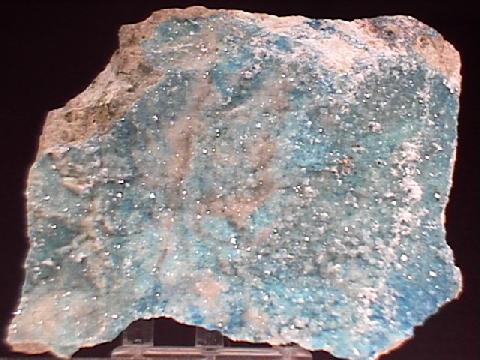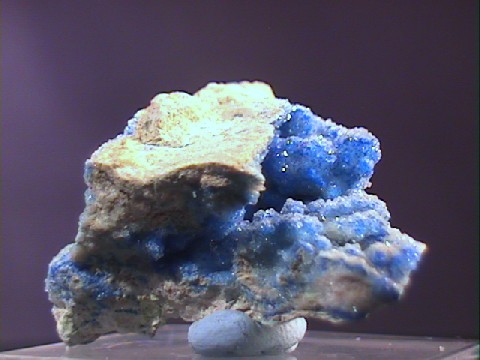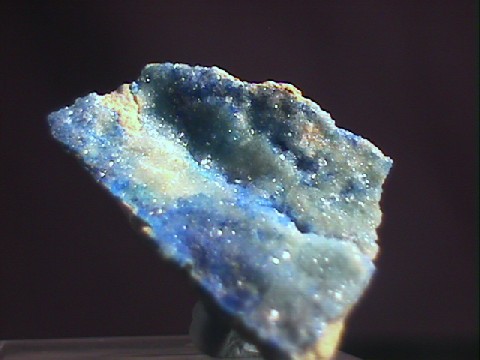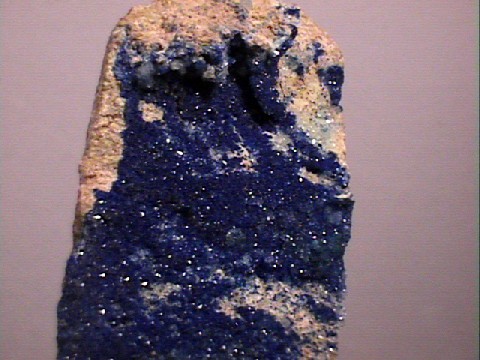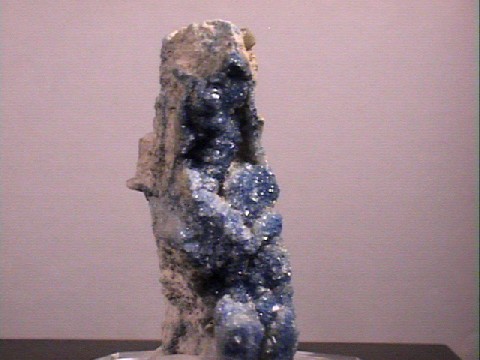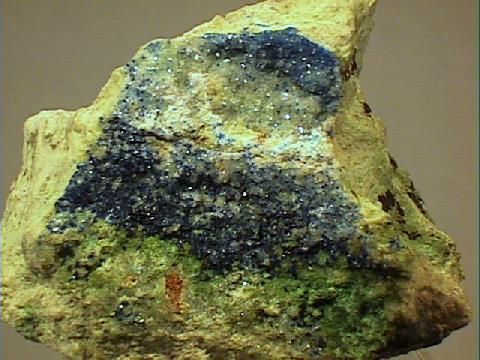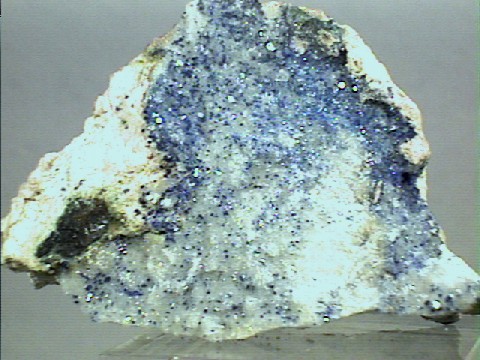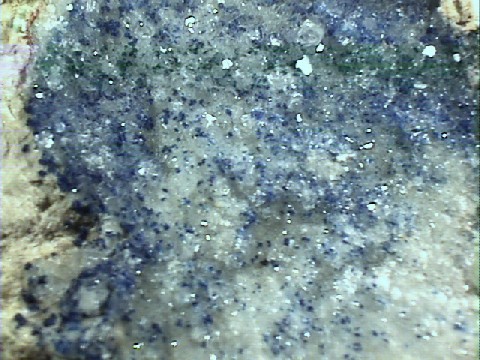 THE
MINERAL KINOITE
THE
MINERAL KINOITE
- Chemistry: Ca2Cu2Si3O10 - 2H2O; Hydrated Calcium Copper Silicate
- Class: Silicates
- Subclass: Nesosilicates
- Uses: A very minor ore of copper and as an ornamental stone.
Specimens
Kinoite is an attractive copper mineral. Its general light blue color is significantly different from other dark blue copper minerals such as azurite, linarite,
Kinoite is a fairly scarce mineral. It is found in only a few localities around the world and most good specimens seem to come from the Christmas Mine in Gila County, Arizona. It is often associated and coated with small crystals of apophyllite which can give a specimen a nice sparkle. Micromountable specimens of kinoite, which have a deeper blue color, are also available and quite attractive and are similar in appearance to clusters of cavansite.
PHYSICAL CHARACTERISTICS:
- Color is a unique light blue for crusts and a deep blue in microcrystals.
- Luster is vitreous.
- Transparency specimens are transparent to translucent.
- Crystal System is monoclinic.
- Growth Habits include small acicular to thin prismatic crystals found as spherules or sprays of acicular radial crystal clusters. Other habits include massive and as crusts.
- Hardness is varies from 2 - 5 depending on whether in crusts or individual crystals.
- Specific Gravity is approximately 3.2 (above average for a non-metallic minerals)
- Streak is blue.
- Associated Minerals are apophyllite,
stringhamite , copper,wollastonite , calcite,djurleite , bornite and chalcopyrite. - Notable Occurrences are the Santa Rita Mountains in Pima County and the Christmas Mine, Gila County, Arizona, USA and a few other secondary copper deposits.
- Best Field Indicators are color, crystal habit, locality and associations.

